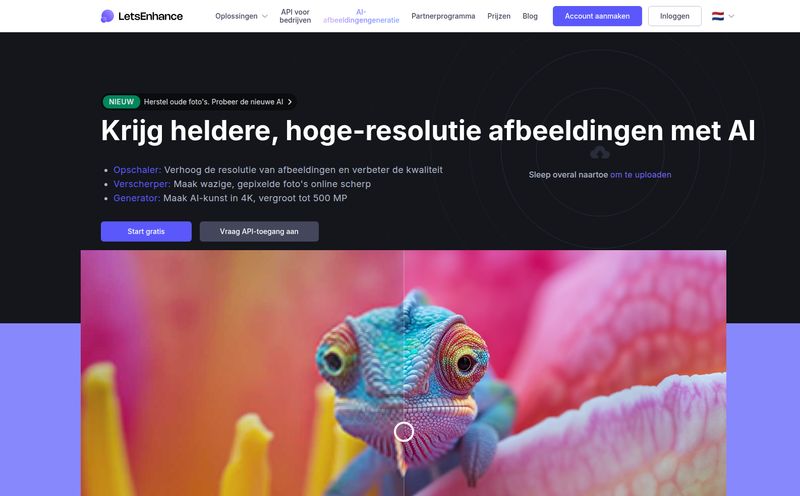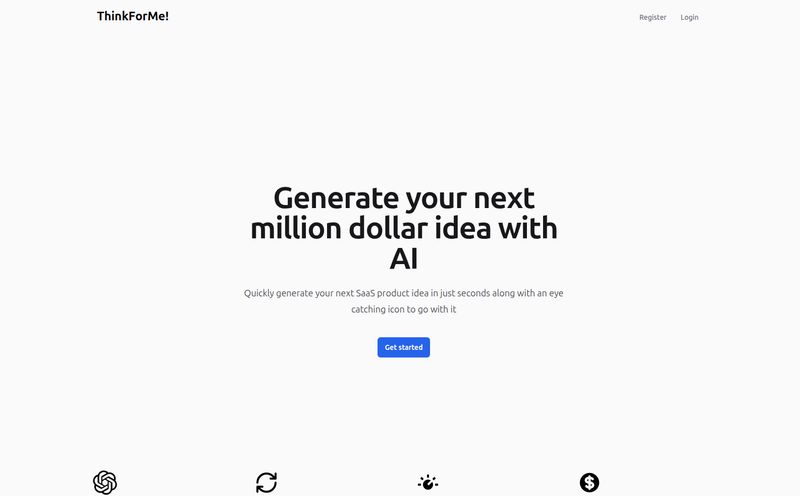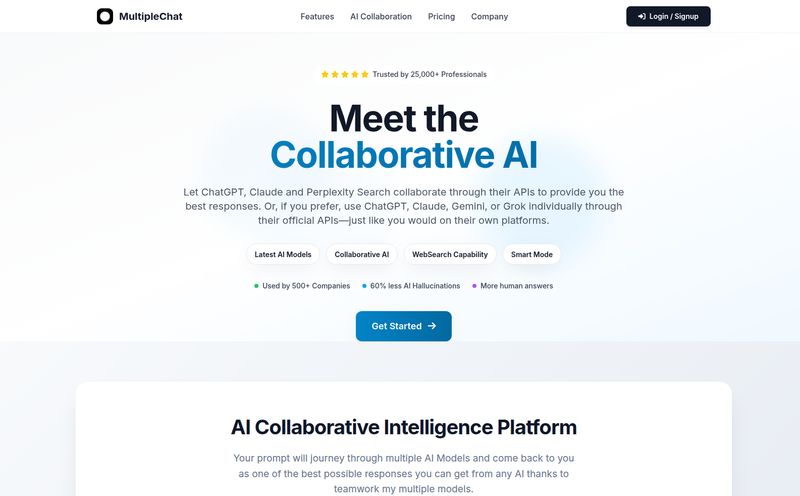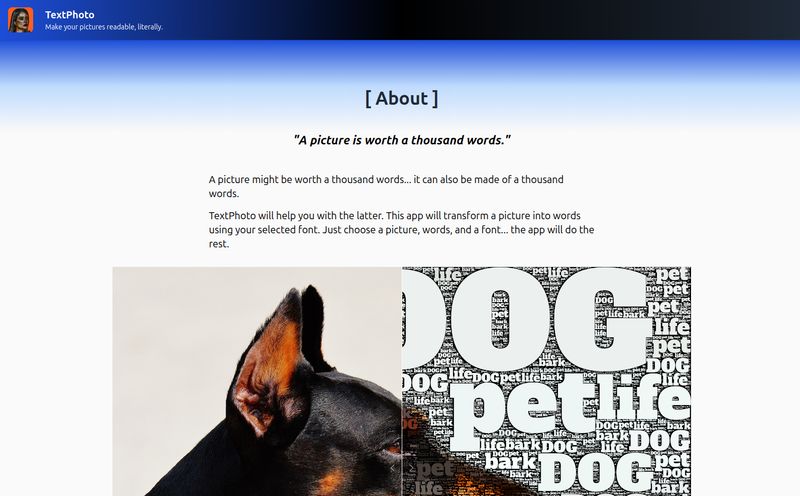The AI art space is getting… crowded. Every week there's a new 'Midjourney killer' or a 'DALL-E alternative' that promises the moon. I've spent more hours (and dollars) than I care to admit tinkering with prompts, wrestling with Discord bots, and trying to get a local installation of Stable Diffusion to work without setting my laptop on fire.
It's a digital gold rush, but for JPEGs of astronauts riding horses. So when another tool called OpenDream landed on my radar, my first reaction was a healthy dose of SEO-professional skepticism. Another one? But this one felt a little different. The promise was simple: create stunning AI art, fast, without the headache. And you know what? They might actually be onto something.
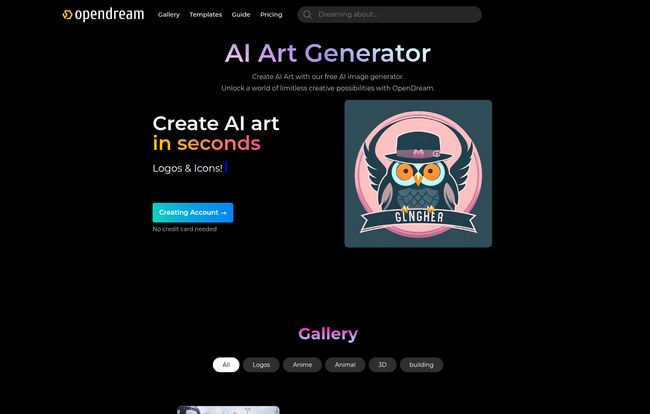
Visit OpenDream
So, What Exactly is OpenDream?
At its heart, OpenDream is a text-to-image AI art generator. You give it a sentence, a string of keywords, a poetic thought—what we in the biz call a 'prompt'—and its AI engine spits back a unique image. Simple. But where it starts to get interesting is in its approach. It’s not just a blank box and a blinking cursor. It's built to be accessible. Think Canva, but for generating original art instead of editing stock photos.
It’s designed for everyone from the curious hobbyist who wants to see their dog as a Jedi knight to the busy content creator (hi, that's me) who needs a unique blog header image, like, yesterday.
First Impressions and Getting Started
Logging in, the interface is clean. It's a slick, dark-mode-first design that doesn’t overwhelm you with a million knobs and dials. You’ve got a gallery front and center, which is great for sparking ideas when you’re drawing a blank. You see what other people are making, which immediately gives you a feel for the platform's capabilities. And right at the top, that all-important prompt bar is just waiting for you.
There's no complicated setup. No joining a specific server. You just… go. In an industry that sometimes feels like it requires a computer science degree to participate, this simplicity is a breath of fresh air.
The Features That Actually Matter
Alright, a pretty face is one thing, but can it perform? I took a look under the hood to see what makes OpenDream tick.
The Core Text-to-Image Engine
The main event, of course, is the image generation itself. I found it to be surprisingly fast. Even on the free plan, you're not waiting ages for a result. The quality is solid, especially once you start getting a feel for the different models. It's not quite at the hyper-realistic, emotionally devastating level of the latest Midjourney v6, but it's more than capable of producing professional, eye-catching, and often beautiful artwork. It's a workhorse.
A Playground of Models and Styles
This is where OpenDream really starts to shine for me. It’s not a one-trick pony. It offers several different AI models, including popular ones like Stable Diffusion 2.1 and more specialized ones like Dreamlike Photoreal 2.0, Dreamlike Anime 1.0, and Deliberate. This means you can guide the AI's entire aesthetic. Want a photorealistic portrait? Use the photoreal model. Need a cool anime character for a project? Switch models. It's like having a team of specialized artists at your disposal, and it’s a huge advantage over platforms that lock you into a single house style.
Templates to Kickstart Your Creativity
I’ll admit, I scoffed at the 'Templates' feature at first. A template for creativity? Sounds counterintuitive. But I was wrong. These are essentially pre-packaged, high-quality prompts with settings already dialed in. You can click on "Mysterious Characters" or "Disney Princess 3D," see the prompt that made it, and then tweak it to make it your own. For beginners, this is an incredible learning tool. For pros on a deadline, it’s a brilliant shortcut to a great result. It's like a creative buffet – you can pick and choose what looks good and add your own spice.
Commercial Use Rights are a Game-Changer
Pay attention to this part, because it’s huge. OpenDream allows you to use the images you create commercially. Yes, even on the free plan. As someone who constantly needs visuals for blogs, social media, and client work, this is a massive value proposition. The licensing rules for AI art can be a murky swamp, so having a platform that gives you a clear green light is a major relief.
Let's Talk Money: The OpenDream Pricing Plans
Okay, the million-dollar—or rather, the zero-to-ninety-nine-dollar—question. How much does it cost? The pricing structure is pretty straightforward, which I appreciate.
| Plan | Price | Key Features |
|---|---|---|
| Free | $0.00 /mo | 20 free credits to start, daily top-ups, commercial use, sequential generation. |
| Essential | $9.90 /mo | 3000 credits, 4x parallel generations, no ads, private generations. |
| Pro | $19.90 /mo | 7000 credits, allows NSFW prompts. |
| Business | $99.90 /yr | Unlimited credits, NSFW prompts, instant support. |
The Free plan is genuinely useful. It’s not just a crippled demo. You can absolutely create usable art with the daily free credits. The paid plans are built around a credit system (except for the unlimited Business plan). For me, the Essential plan hits a sweet spot for regular use. The parallel generations mean you can run four image requests at once, which is a big workflow improvement. The Pro plan's main draw is more credits and the ability to use NSFW prompts, which is a necessity for certain types of artistic exploration. And the Business plan? Unlimited credits for about ten bucks a month (billed yearly) is an incredible deal if you're a heavy user.
The Good, The Bad, and The Arty
No tool is perfect. After spending some quality time with OpenDream, here’s my honest breakdown.
What I love is the sheer accessibility. It’s fast, the interface is a joy, and the free plan is generous. The commercial use rights are a killer feature, and the variety of models is a huge plus. Its a fantastic entry point into AI art.
On the flip side, the credit-based system on most paid tiers can feel a bit like an arcade machine. You know you're getting value, but you're always aware of the tokens in your pocket. Also, locking NSFW capabilities behind the Pro plan is a standard industry practice, but still a limitation for some artists who might want to experiment on a smaller budget. And while the quality is great, it might not dethrone Midjourney for that last 5% of photorealistic polish just yet.
Frequently Asked Questions about OpenDream
1. How difficult is it to get started with OpenDream?
It's incredibly easy. If you can type a sentence into a search bar, you can create art with OpenDream. You sign up and can start generating images in less than a minute. The template feature makes it even easier for total beginners.
2. Can I really use the images for my business?
Yes, according to their terms, you get commercial usage rights for the images you generate, even on the free plan. This is a major advantage for bloggers, marketers, and small business owners.
3. What are 'credits' and how do they work?
Credits are what you use to generate images. One standard image generation costs one credit. The Free plan gives you a daily allowance, while the paid plans give you a larger monthly bucket of credits to use.
4. Is OpenDream better than Midjourney or DALL-E 3?
"Better" is subjective. Midjourney might have a slight edge in raw, artistic output quality for now, but it comes with a steeper learning curve and is based in Discord. OpenDream is vastly more user-friendly and accessible. It’s a different tool for a slightly different purpose. I see it as a fantastic, powerful alternative that prioritizes speed and ease of use.
So, Is OpenDream Your Next Creative Partner?
After all my testing, I've added OpenDream to my regular toolkit. It's not going to replace every other tool for every single purpose, but that's not the point. It has successfully carved out its own space.
If you're an AI art veteran, you'll appreciate the speed and the multi-model flexibility. If you're a content creator or marketer, the ease of use and commercial rights are a godsend. And if you're completely new to this whole world and just want to dip your toes in without getting overwhelmed, I honestly can't think of a better place to start.
Give the free plan a spin. I have a feeling you’ll be pleasantly surprised.
